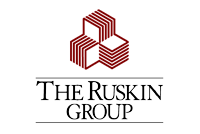“Love at first sight”—cliché for sure, but in a packaging sense, I would go so far as to call it the kind of first impression brands dream of.
Making this a reality, however, requires a pivot in how brands conceptualize a package. From first sketch to first impression, it requires brands to think like a matchmaker. Because an optimal packaging strategy is really one that matches brand identity with the function of packaging.
Smartphone packaging is a perfect example of this—the packaging fits in the palm of your hand like the product inside. Crisp, perfect edges convey a look and feel that’s both high-end and familiar in the tech space. Smartphone packaging delivers a sensory experience that many consider second to none.
Love-at-first-sight packaging doesn’t have to be left to chance—or something only large smartphone manufacturers can achieve.
Remember, packaging is the only form of marketing that connects with every one of your consumers, regardless of the buying channel. To bring brand and function together effectively in a package’s design, I encourage you to play Cupid. Here are six ways to do just that:
1. Test smarter (and faster)
Smaller-run market tests provide companies an efficient, low-risk opportunity to test a variety of packaging combinations—structure, shape, graphics, material, messaging.
Through short runs, brands are able to create prototypes faster and, ultimately, observe how a package might look and perform in the marketplace. This also shortens the initial feedback loop and optimizes production costs by providing targeted clues that help redirect a package’s design for better results.
In the end, a brand is able to put a package on store shelves or door steps that will best appeal to its customers, drive sales, and deepen the brand connection.
2. Personalize the experience through variability
There’s no denying, one-to-one personalization can bring a brand closer to its customer. But personalization in a broader, more mass-produced sense may also strike a chord. Consider an approach that takes a few steps back and tailors a package for larger targets (instead of trying to tailor to each individual consumer).
For example, Snickers’ “You’re Not You When You’re Hungry” campaign replaced the iconic parallelogram on its packaging with 25 (humorous) hunger symptoms. This is an example of high-level personalization that consumers could positively interact and identify with.
3. Put sustainability front and center
According to recent research by Futerra, nearly 90% of consumers would like brands to help them live more sustainably. This isn’t lost on packaging professionals—70% of whom feel environmental concerns for single-use plastic packaging are at an all-time high.
As strategy development occurs around the entire consumer-package interaction, brands have a social responsibility to hold discussions that not only consider sustainable packaging, but aim to deliver it. It is what consumers want and expect. And having packaging that puts sustainability front and center may win over a new customer.
4. Augment reality to show, not tell
Augmented reality (AR) trended hard and fast in 2016 with Pokémon Go. This mobile game generated more than $1 billion in revenue. It also offered up proof the public was AR-interested.
Truthfully, since 2016, AR’s impact on modern product packaging has been a bit muted. Early adopters, however, are using AR technology to make their product stand out on the shelf and take their message beyond the written word and into demonstration mode.
The key to making it work? Avoid using it as a gimmick. This technology is approachable and has endless possibilities. Leverage it to enhance product visualization, remove language barriers, and facilitate the purchase.
5. Drive the multi-sensory experience
Across a number of industries, we’re seeing soft-touch applications rise in popularity as brands swap out high-gloss finishes for a completely different aesthetic. As more consumers associate the touch and feel of a package with the quality of the product inside, soft-touch finishes initiate a multi-sensory experience that’s high-end, velvety, durable and resistant to fingerprints.
Remember, packaging is not meant to exist in 2D. When a consumer is drawn in by the visual elements of a package, a natural next step is to then pick it up off the shelf. This tactile interaction is where the love-at-first-sight—or even love-at-first-touch—experience gains steam.
6. Never lose sight of the where first interactions happen
Front door or in store, your customer’s first experience with a product and its packaging can vary greatly depending on the setting. Design accordingly.
For an ecommerce experience, the buying decision has already been made and the transaction is complete. In this case, brands should place additional emphasis around the opening experience. Consider saving the sensory experience for the inside of the box. Or enhance your credit on sustainability by shipping a product in its own container.
While security and protection for parcel transportation should always be top priority, packaging still provides brands with enough opportunities to produce an unexpected opening experience that deepens brand connection.
As brands think about what will make consumers fall in love with their products this year, they must first think about how to get a consumer to fall in love with their packaging. Appealing to consumer interests like sustainability are a great starting point, while integrating technology or new finishing techniques to create sensory experiences can make a match at the first moment of truth.
____________________________________________________________________________________________
 Find your success! Subscribe to free Packaging Digest enewsletters.
Find your success! Subscribe to free Packaging Digest enewsletters.
https://www.packagingdigest.com/packaging-design/create-packaging-that-inspires-love-at-first-sight-2020-02-13
Comments are closed.

